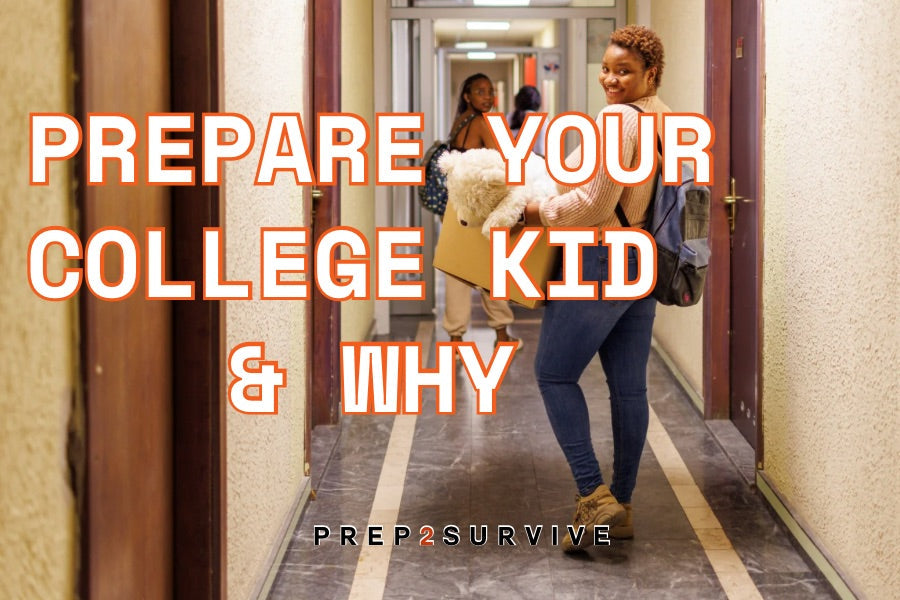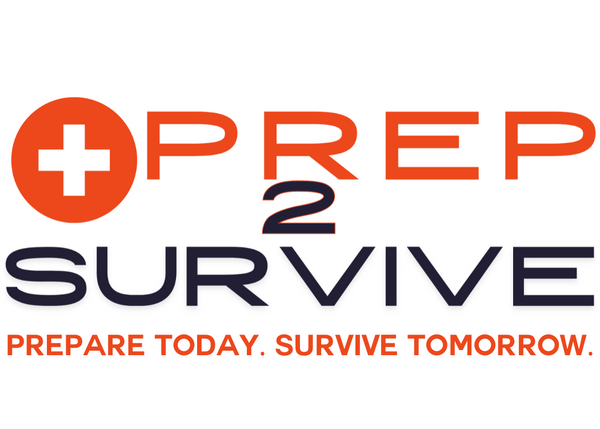
Prep2Survive Guide: Building a College Emergency Kit for Your Student
When your campus-bound kid heads off to college, you want to trust they’re ready—not just for exams and term papers, but for anything life may throw at them.
That’s why prepping a college emergency kit is a power move—whether it’s sitting in their dorm or tucked in their vehicle, it’s safety, comfort, and peace of mind rolled into one.
Here at Prep2Survive, we know preparedness thrives on smart planning and thoughtful gear.
Here’s how to build a durable, versatile kit your student can rely on—whether they’re facing a midnight snowstorm, unexpected cold snaps, or simply need a reliable backup when true emergencies strike.
1. Start with the Right Container
Choose something sturdy and organized—like a backpack, durable tote, or even a small duffel.
Bonus points for compartments or sturdy straps so nothing rattles around. This kit should be portable, easy to store, and easy to grab when needed.
2. Gear for Vehicle Storage
If your student drives to campus or has a vehicle nearby, make use of that storage space wisely:
- Food & Water: Pack MREs or freeze-dried meals (they’re compact and shelf-stable), plus sealed water bottles or a case + a reliable mini-water filter (like the Sawyer Mini).
- Emergency Bucket: Think multi-functional—tools, rain gear, even extra blankets.
-
Sleeping Gear: A lightweight sleeping bag or emergency bivvy can be a lifesaver if stranded.
(We want them overprepared, not underprepared.)
3. Essential Kit Basics
Here’s what goes into your kit—select layered items your student can rely on:
- First Aid & OTC Meds: Bandages, antiseptic, pain relief (like ibuprofen), cold medicine, allergy meds—basics that disappear fast in emergencies.
- Water Solutions: Filter or purification tablets added to bottled water backups.
- Firestarting Tools: Waterproof matches, a lighter, or a reliable fire starter for warmth or signaling.
- Important Documents Binder (Grab-n-Go Binder): Include student ID, medical info, emergency contacts—laminated or in a waterproof pocket.
4. Sleeping & Warmth Essentials
Even dorms get cold unexpectedly—especially during blackouts:
- Small sleeping bag or emergency blanket
- Extra socks or a packable wool hat might sound minor, but on chilly walkways, they can be lifesavers.
5. Build Redundancy
Prep2Survive lives by “redundancy saves lives.” Multiple light sources (flashlight, headlamp), a backup phone charger, and at least one extra layer of clothing ensure they’re ready, even if one piece fails.
6. Plan and Practice
A kit is only as good as the plan behind it:
- Set up evacuation routes and safe spots on campus
- Document how to get in touch during disasters—both digital and paper backup
- Teach them to use the kit and review it each semester—just like rotating through pantry supplies.
Bonus: Layered Lifesaving Tools
Recent prep trends now include practical safety tools such as Narcan (naloxone), contraception (Plan B), and even condoms—recognized as harm-reduction essentials for today’s college realities.
Including these isn’t about fear or encouragement—it’s about equipping your student to help themselves and others if the need arises. It’s about safety, preparedness, and responsibility.
Prep2Survive Quick-Build Summary
Kit Container: Durable, organized, portable
Stored In: Dorm or vehicle (if available)
Core Contents:
- MREs or snacks + water (and filtration)
- First aid kit + OTC medicine
- Firestarter tools, emergency blanket/sleeping bag
- Flashlight/headlamp, backup power, and extra clothing
- Grab-n-Go binder with documents & contacts
-
Optional but smart: Narcan, Plan B, condoms
Strategies: - Teach your student how and when to use each item
- Update/replenish contents each semester
- Practice evacuation and check that everything is accessible
Final Thoughts
With this Prep2Survive-style kit, you’re not just sending your student off—you’re giving them autonomy, safety, and preparedness as they navigate campus life. When they hit bumps in the road, literally or metaphorically, they’ll be equipped to handle them with confidence. Because thriving isn’t just about success—it’s about readiness.
